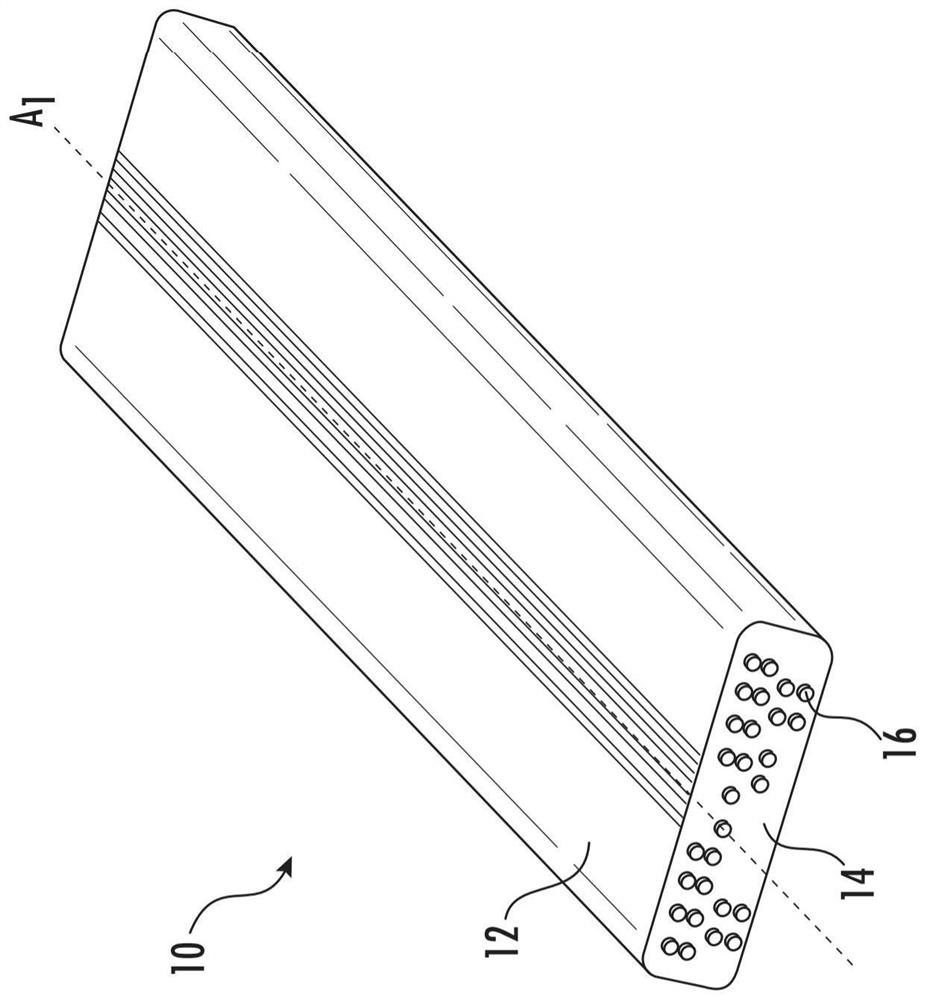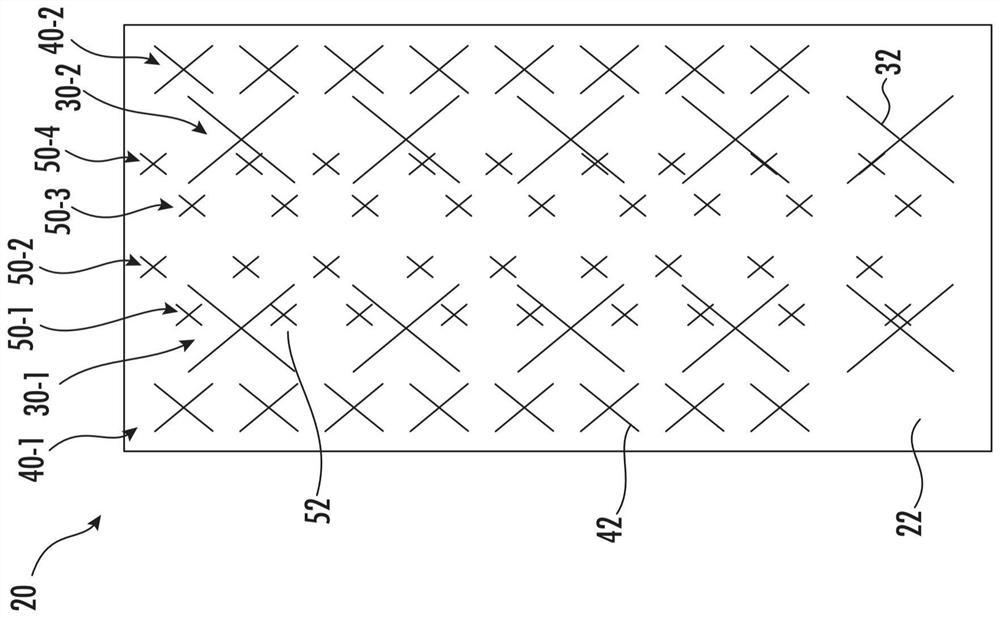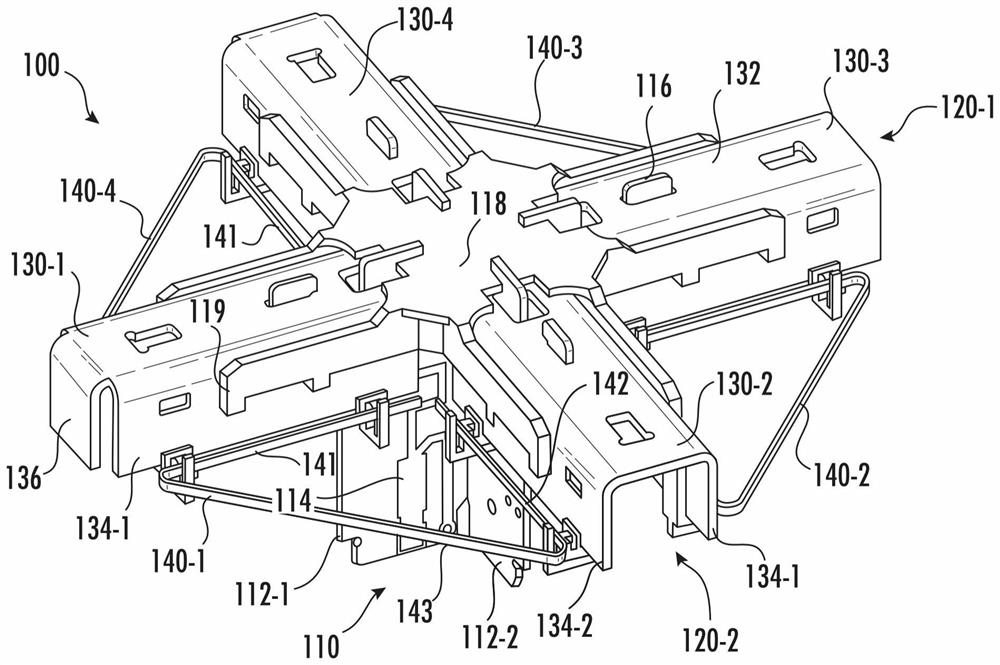Wideband radiating elements including parasitic elements and related base station antennas
A technology of radiating elements and parasitic elements, which is applied to antenna unit combinations and antennas with different radiating element structures and polarization directions, and can solve problems such as difficulty in meeting performance specifications, difficulty in meeting performance specifications, and difficulty in ensuring performance.
- Summary
- Abstract
- Description
- Claims
- Application Information
AI Technical Summary
Problems solved by technology
Method used
Image
Examples
Embodiment Construction
[0046] According to an embodiment of the present invention, there is provided a crossed-dipole radiating element comprising a parasitic element extending the frequency band of operation of the radiating element. These parasitic elements may be disposed between adjacent dipole arms of the radiating element and may couple RF energy from a dipole arm having a first polarization to a dipole arm having a second polarization. The parasitic elements increase the length of the current path and thus the effective length of the dipole arms. The parasitic element can be designed such that RF energy in a particular frequency range is preferentially coupled to the parasitic element, and thus the parasitic element can be used to primarily increase the effective length of the dipole arm for the selected frequency range, and provide little Or no increase in the effective length of the dipole arms for other frequency ranges is provided. Due to this design, relatively small dipole radiators ca...
PUM
 Login to view more
Login to view more Abstract
Description
Claims
Application Information
 Login to view more
Login to view more - R&D Engineer
- R&D Manager
- IP Professional
- Industry Leading Data Capabilities
- Powerful AI technology
- Patent DNA Extraction
Browse by: Latest US Patents, China's latest patents, Technical Efficacy Thesaurus, Application Domain, Technology Topic.
© 2024 PatSnap. All rights reserved.Legal|Privacy policy|Modern Slavery Act Transparency Statement|Sitemap



